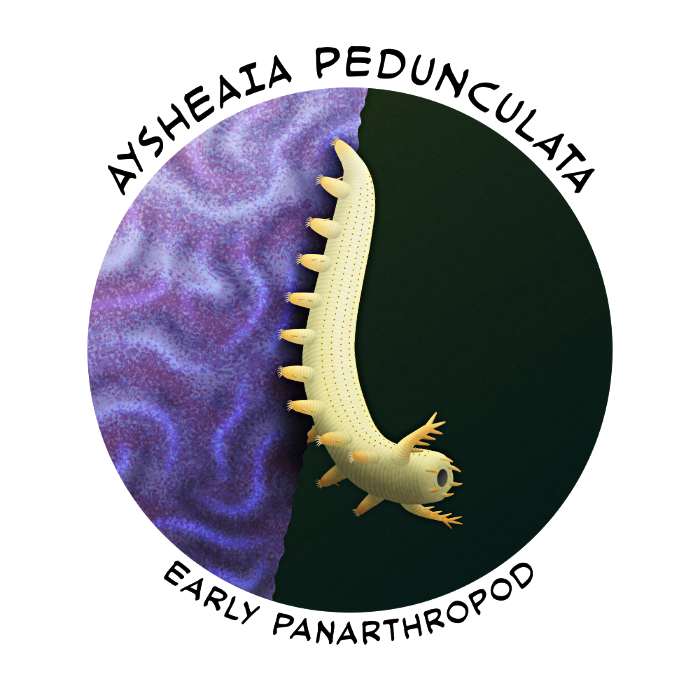Now that the other ecdysozoans are out of the way, we’re actually getting to the main stars of this series: the panarthropods.
Containing all the modern arthropods, tardigrades, and velvet worms, along with the extinct lobopodians and dinocaridids, the earliest panarthropods are thought to have originated somewhere towards the end of the Ediacaran Period and then diversified incredibly quickly in the early Cambrian. Trace fossils and “small shelly fossils” hint at an arthropod presence only a few million years after the start of the Cambrian (~537 million years ago) and by 521 million years ago there were already trilobites all around the world – which means by that point the ancestors of all the other major lineages of true arthropods (chelicerates, myriapods, and pancrustaceans) must have also already diverged from each other.
Unfortunately due to the patchy nature of the fossil record and the rarity of good preservation conditions we only really have a few snapshots of this group’s diversity from points in the Cambrian after the main burst of their evolutionary explosion had already happened. But as more and more fossils are discovered we’re gradually piecing together a fairly decent idea of early panarthropod relationships, and some of the most famous “weird wonders” that were once thought to be entire separate “failed experiment” animal phyla are now properly reunited with their relatives.
There’s still disagreement on a lot of the details of their evolutionary relationships, but at least we’re pretty sure nobody’s reconstructing these poor things upside-down and back-to-front anymore.
…Probably.

We don’t known exactly what the very earliest panarthropods looked like, but they may have resembled something like Aysheaia pedunculata.
This soft-bodied worm-like animal is known from the Canadian Burgess Shale deposits (~508 million years ago). Up to about 6cm long (2.4″), it had ten body segments with stubby claw-tipped legs, a pair of spiny front appendages, and a mouth ringed with six finger-like grasping projections.
Although generally considered to be a lobopodian, possibly related to early velvet worms, its fairly basic body plan has led some studies to instead classify it as a basal panarthropod. It’s also been proposed as a possible close relative of tardigrades.

Tardigrades (also known as “water bears” or “moss piglets”) are chubby eight-legged little panarthropods found all around the world, pretty much everywhere in terrestrial and aquatic ecosystems. While they’re famous for their ability to survive extreme environmental conditions (including being frozen for decades and direct exposure to outer space), they’re not immortal or indestructible, or even actually all that resilient when not in their dormant “tun” state – they don’t go seeking out extreme conditions, they’re just able to tolerate them when they absolutely have to.
(Also the tardigrades that accidentally crash landed onto the moon couldn’t survive that kind of impact, and are all dead. Sorry.)
Over 1000 modern species are known, but they have very little fossil record due to their tiny meiofaunal size (usually less than 1mm/0.04″) and their soft unmineralized bodies. Only three definite fossils have been found so far, all preserved in amber dating to the Cretaceous and Miocene.
A possible Cambrian representative has also been found in the Olenyok area of northern Siberian Russia, dating to about 510 million years ago. Around 300μm long (0.01″), this unnamed species already looked very similar to modern tardigrades but only had three pairs of limbs – although there appears to have been another pair in early development at its rear end, suggesting it was actually a larval form.
Along with Aysheia, some other Cambrian lobopodians like Orstenotubulus and Onychodictyon have also been proposed as potential close relatives of tardigrades, but since the Siberian larva is already so similar to modern forms it doesn’t really give us any new information about where exactly tardigrades belong in that “evolutionary grade“. The water bears must have arisen from somewhere in the early lobopod-like panarthropod family tree, miniaturizing from a much larger ancestor, but whether they split off before or after velvet worms is still unclear.
